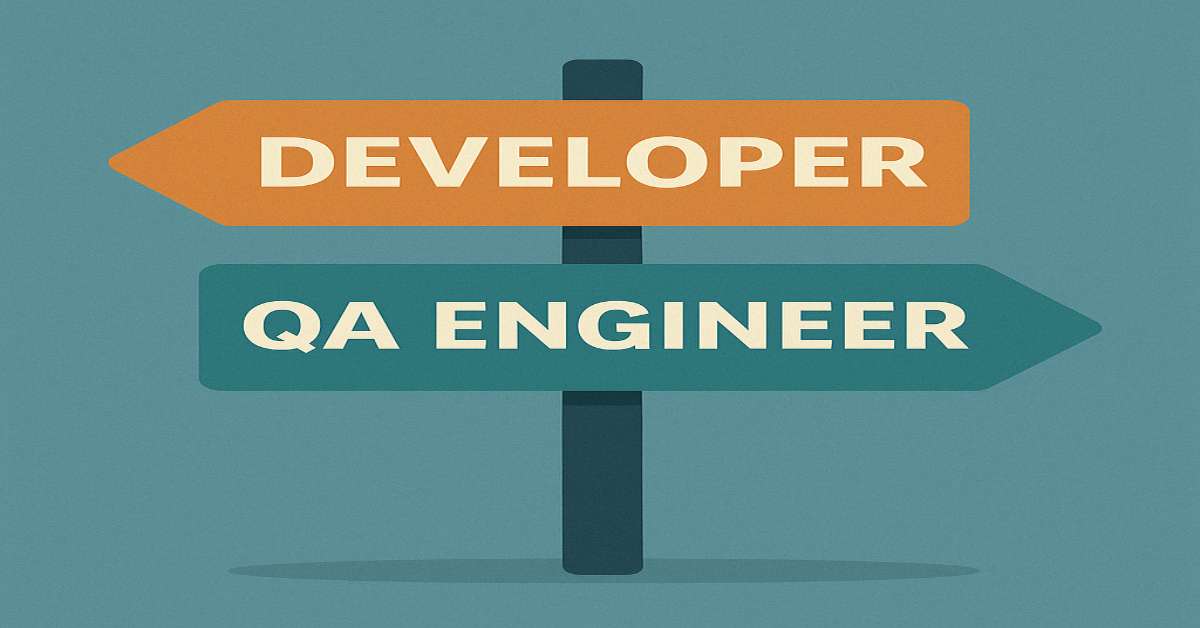 CASE STUDY
CASE STUDY Best Career Switch Guide: From Developer to QA Engineer

There was a time when QA was seen as less technical than development. Not anymore!
In 2025, QA professionals are expected to write automation scripts, architect testing pipelines, and even influence product design decisions. So, if you’re a developer who enjoys breaking things, building smarter workflows, or advocating for the end user—QA might be your ideal next chapter.
Why Make the Switch? (And Why Now?)
In case you are craving variety, deeper product ownership, or a shift from pure coding to quality-centric thinking, QA offers a rewarding career path. Let’s take a look at why it's trending among developers:
- Quality-Driven Thinking: You’re interested in how to prevent bugs, not just fix them.
- Broader Impact: QA roles often cut across dev, product, and customer success teams.
- Growth Opportunities: SDETs, QA architects, and test leads are some of the most valued roles in Agile teams.
- Balance: Some devs find QA less demanding in terms of release stress, yet equally intellectually engaging.
What You Already Bring to the Table?
Your development experience isn’t wasted—it’s your superpower. Here's what already sets you apart:
- Solid foundation in writing and debugging code.
- Comfort with version control (Git), CI/CD workflows, and Agile ceremonies.
- A “developer’s eye” for where things can break and how to isolate bugs.
- Understanding of software architecture, data structures, and business logic.
What You’ll Need to Learn (and How to Learn It)
As always, you will need to build a foundation in QA-specific principles, tools, and workflows. Below is a quick guide to get started:
- Core Testing Concepts: Learn test types, test case writing, and QA life cycles.
- Manual and Exploratory Testing: Practice mimicking real user behavior and edge cases.
- Automation Frameworks: Learn test automation tools that complement your programming skills.
- API Testing: Master HTTP, JSON, Postman, and automated test scripts.
- Performance & Security Basics: Explore load testing and security tools.
- Test Management Tools: Learn how testing fits into team workflows via JIRA, TestRail, and Zephyr.
How to Position Yourself in Job Applications and Interviews?
Switching fields requires storytelling. And you just need to show hiring managers that your transition is purposeful, not accidental. Here’s how:
- Frame your switch as a strategic move: “I realized I enjoyed preventing issues more than solving them late.”
- Mention any side projects or previous QA contributions: “I built an internal test suite in Cypress that caught 40% of our release blockers.”
- Emphasize learning mindset: “I’ve been hands-on with QA tools, earned certifications, and follow QA thought leaders.”
Bonus: Transition-Friendly QA Job Titles to Target
When applying, don’t just search for “QA.” Instead, look for these specific roles below that are ideal for dev-to-QA transitions:
- QA Automation Engineer
- SDET (Software Development Engineer in Test)
- Test Automation Developer
- Quality Engineer (with a DevOps focus)
- Junior QA Engineer (for more hands-on learning roles)
Final Words
Switching from developer to QA engineer doesn’t mean you’re stepping back. Instead, it means you’re stepping into a more strategic, quality-first mindset. You will work across teams, shape product direction, and ensure that software ships with confidence. In a world where quality is currency, your developer roots can give you a massive head start in building a successful QA career.